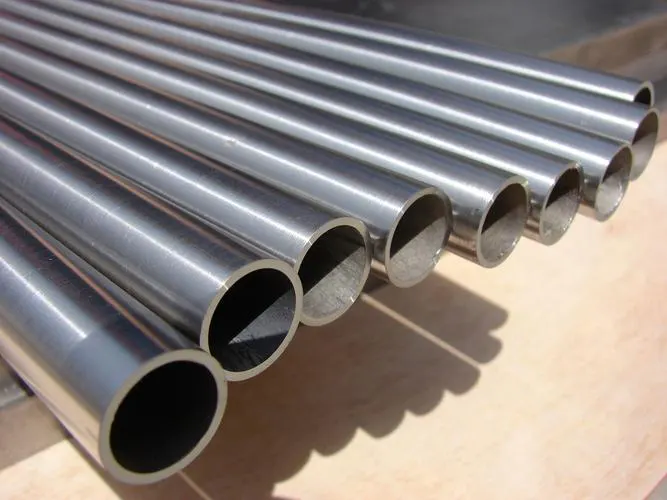What is 316L steel ? It is a specialised low carbon version of 316 aço inoxidável. It has enhanced weldability. Standard stainless steel can be exposed to corrosão pós-soldagem, which it can avoid. It makes for strong and durable tubo de aço inoxidável e acessórios.
What is 316L Steel? The Weld-Friendly 316!
What is 316L steel? It is an aço inoxidável austenítico that is virtually identical to 316 steel, with the main difference being its carbon content. 316L steel has a lower maximum carbon content (0.03% vs. 0.08%), and this lower carbon minimises cromo carbide precipitation. This low carbono minimises chromium carbide precipitation and greatly improves corrosão pós-soldagem resistência.
Vantagens principais
The low carbon content prevents sensitisation and means that the weld is resistant to corrosão intergranular.
316L steel is particularly easy to weld and has a low risk of welding defects. Ensures Tubo de aço inoxidável forte e confiável articulações.
Como 316 steel, 316L steel resists pitting and crevice corrosion. It is resistant to chlorides and a wide range of acids. This extensive protection extends the service life of components and is suitable for demanding chemical processes.
316L has good mechanical properties, performs well at high temperatures and is creep resistant. It is stable in heat processing applications.
Ideal for a wide range of industries, including chemical processing, pharmaceuticals and marine. Can handle corrosive media and high temperatures.
Composição química
| Elemento | Cr | Ni | Mo | C | Mn | Si | P | S |
|---|---|---|---|---|---|---|---|---|
| Conteúdo (%) | 16.0-18.0 | 10.0-14.0 | 2.0-3.0 | ≤0.03 | ≤2.00 | ≤0.75 | ≤0.045 | ≤0.030 |
O que fazemos
Propriedades mecânicas típicas
| Resistência à tracção | Resistência ao escoamento (0,2% Offset) | Alongamento | Dureza (HRB) | Densidade | Faixa de fusão |
|---|---|---|---|---|---|
| ≥485MPa (70ksi) | ≥170MPa (25ksi) | ≥40 | ≤95 | 8,0g/cm³ | 1370-1400°C |
316L Steel in Stainless Steel Pipe and Fittings
- Welded Piping Systems: For all tubulação soldada, including chemical process lines.
- Pharmaceutical equipment: Welded vessels, pipes and fittings. Meets stringent hygiene requirements and maintains purity during processing.
- Marine applications: offshore platforms and ship pipework. Resists salt spray and seawater corrosion, keeping welded parts strong.
- Food & Beverage (corrosive): For processes involving corrosive detergents or brines. Ensures the long-term integrity of welded tanks and pipelines.
- Heat exchangers: Welded tubos trocadores de calor. Handles corrosive fluids at high temperatures.
Fornecimento de tubos e conexões de aço 316
Verifique se há conformidade com Normas ASTM. A norma ASTM A312 abrange tubos de aço inoxidável com e sem costura. A ASTM A403 abrange tubos de aço inoxidável forjado aço inoxidável austenítico acessórios.
Certifique-se de que os tubos e acessórios são do tamanho necessário. Isso inclui especificações (por exemplo, Sch 10, Sch 40), para as quais um ajuste adequado é essencial.
Veja o documento de especificação do tubo de aço inoxidável
Trabalhar com fabricantes de renome. Eles oferecem produtos de aço 316 confiáveis e têm certificações(por exemplo ISO 9001 e CE-PED).
Talvez você também queira ler:
O que é o aço 304? A opção ideal para muitas aplicações!
O que é o aço inoxidável 316Ti?
Aço Inoxidável 316 VS 316L
O que é o aço 304l?
Qual é a diferença entre o aço inoxidável 304 e 316
Aço inoxidável austenítico: 316 LN
O que é o aço inoxidável 304h?
O que é o aço inoxidável 316H?
O que são os aços inoxidáveis H e L - Duplex Pipe
O significado das letras após os tipos de aço inoxidável
Contate-nos
- RM901 No.22 Tangjiaqiao Road Wenzhou China
- +86 577 8551 1171
- [email protected]
- https://www.kaysuns.com/



